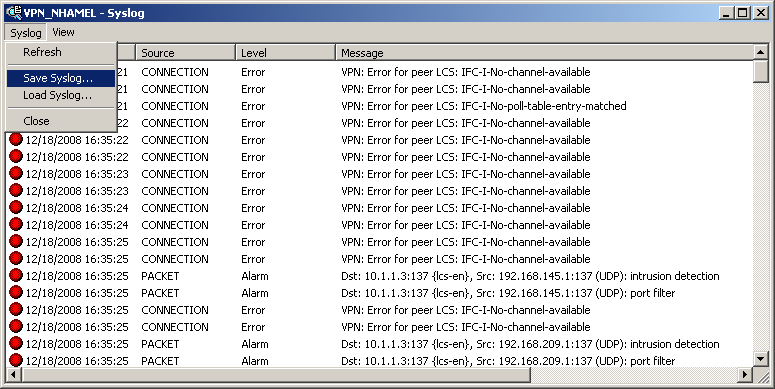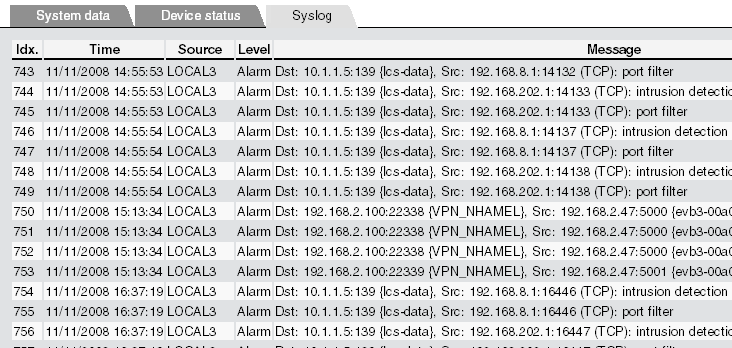The SYSLOG module allows accessing of the device to be logged. This function is especially interesting for system administrators as it optionally records a complete history of all activities in the device.
A corresponding SYSLOG client or daemon is required to receive the SYSLOG messages. Logging under UNIX/Linux is generally performed by the SYSLOG daemon that is set up by default in these operating systems. The daemon either establishes contact with the CLI or writes its log to an appropriate SYSLOG file.
Under Linux, the file /etc/syslog.conf contains a definition of which facilities (service or component that issued the message) should be written to which log file. Please check your daemon's configuration to see if it explicitly listens to network connections.
Windows does not provide a corresponding system function. You require special software to provide the functionality of a SYSLOG daemon.
- In the device statistics on the command line
- In WEBconfig under /System information/Syslog
- LANmonitor additionally lets you export the syslog from the device and save it to a file. Simply click on the entry for the device with the right mouse button and select View Syslog from the context menu. A snapshot of the current status is displayed. Clicking on Refresh exports a copy of the current syslog and this is displayed in the window. Save syslog... stores the current display to a file. The content of syslog files can be viewed with Load syslog....

Alternatively you can view the current SYSLOG messages on the first page of WEBconfig on the SYSLOG tab:

